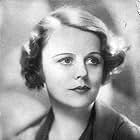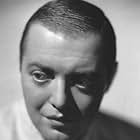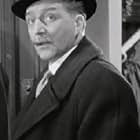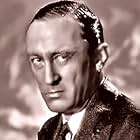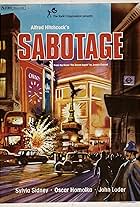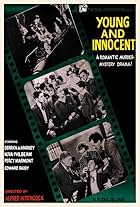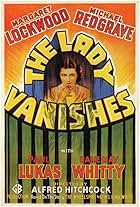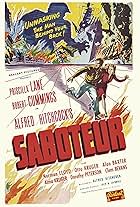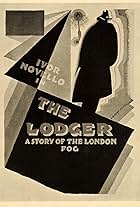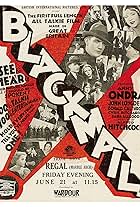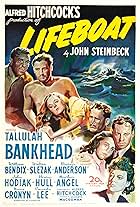An ordinary British couple vacationing in Switzerland suddenly find themselves embroiled in a case of international intrigue when their daughter is kidnapped by spies plotting a political as... Read allAn ordinary British couple vacationing in Switzerland suddenly find themselves embroiled in a case of international intrigue when their daughter is kidnapped by spies plotting a political assassination.An ordinary British couple vacationing in Switzerland suddenly find themselves embroiled in a case of international intrigue when their daughter is kidnapped by spies plotting a political assassination.
- Awards
- 1 win & 1 nomination
D.A. Clarke-Smith
- Binstead
- (as D.A. Clarke Smith)
Frank Atkinson
- Policeman Shot Behind Mattress
- (uncredited)
Betty Baskcomb
- Lawrence's Maid
- (uncredited)
Cot D'Ordan
- Concierge
- (uncredited)
Tony De Lungo
- Hotel Manager
- (uncredited)
Clare Greet
- Mrs. Brockett
- (uncredited)
Pat Hagan
- Policeman at Siege
- (uncredited)
Joan Harrison
- Secretary
- (uncredited)
Edward A. Hill-Mitchelson
- Minor Role
- (uncredited)
Storyline
Did you know
- TriviaWhen Peter Lorre arrived in Great Britain, his first meeting with a British director was with Sir Alfred Hitchcock. By smiling and laughing as Hitchcock talked, the director was unaware that Lorre, a Hungarian, had a limited command of the English language. Hitchcock subsequently decided to cast Lorre in this movie, and the young actor learned much of his part phonetically.
- Goofs(at around 21 mins) When Bob Lawrence and his daughter exit the chalet porch to watch the trap shoot, Bob pushes the left door outwards. When the camera cuts to an outside view of their leaving the building, it's the other door that is swinging shut, and it is closing from the inside.
- ConnectionsEdited into 365 Days, also Known as a Year (2019)
- SoundtracksStorm Clouds Cantata
(1934) (uncredited)
Music by Arthur Benjamin
Words by D.B. Wyndham-Lewis
Performed by London Symphony Orchestra
Under the direction of H. Wynn Reeves
Featured review
There is a long-standing tradition in film for someone to come along at a later time and feel moved to remake a movie now considered a classic.
In many cases, the remake is really nothing more than an homage to the earlier version----perhaps updated to reflect the use of color and employment of some subsequent technical advances---but with little else to offer. "Prisoner of Zenda" (1952) and the recent "Psycho" come to mind as examples of such productions.
Occasionally, the creator of the earlier film feels inspired to try to improve upon it himself. This by no means ensures success. Compare Frank Capra's "Lady for a Day" (1934) with his "Pocketful of Miracles." ((1951) On the other hand, many believe that DeMille's "Ten Commandments" (1956) is better in its story telling than his silent version made in 1923.
So much has been written about the two versions of "Man Who Knew Too Much" that there is very little one can add that hasn't been said before. Having seen them recently back-to-back, my personal opinion is that they are both flawed---but in different ways. The earlier film is quaintly primitive---particularly in matters involving continuity, use of sound, editing and other technical issues. On the other hand, the later version seems excessively padded with much extraneous material, has a male juvenile actor who is quite inferior to Nova Pilbeam in the original and has villains who lack the unique menace of Peter Lorre---with his rare combination of subtle humor, wit and terror.
In the end, the viewer is left with a sort of Hobson's Choice. Hitchcock himself said that the earlier work was that of a skilled amateur while the latter was the effort of a seasoned professional. No doubt in many ways he is right.
But there is something to be said about the sheer originality and power of a first effort----flawed though it may be. "Citizen Kane" was also the product of a skilled amateur. Could a more mature Orson Welles have improved upon it even with its flaws?
In many cases, the remake is really nothing more than an homage to the earlier version----perhaps updated to reflect the use of color and employment of some subsequent technical advances---but with little else to offer. "Prisoner of Zenda" (1952) and the recent "Psycho" come to mind as examples of such productions.
Occasionally, the creator of the earlier film feels inspired to try to improve upon it himself. This by no means ensures success. Compare Frank Capra's "Lady for a Day" (1934) with his "Pocketful of Miracles." ((1951) On the other hand, many believe that DeMille's "Ten Commandments" (1956) is better in its story telling than his silent version made in 1923.
So much has been written about the two versions of "Man Who Knew Too Much" that there is very little one can add that hasn't been said before. Having seen them recently back-to-back, my personal opinion is that they are both flawed---but in different ways. The earlier film is quaintly primitive---particularly in matters involving continuity, use of sound, editing and other technical issues. On the other hand, the later version seems excessively padded with much extraneous material, has a male juvenile actor who is quite inferior to Nova Pilbeam in the original and has villains who lack the unique menace of Peter Lorre---with his rare combination of subtle humor, wit and terror.
In the end, the viewer is left with a sort of Hobson's Choice. Hitchcock himself said that the earlier work was that of a skilled amateur while the latter was the effort of a seasoned professional. No doubt in many ways he is right.
But there is something to be said about the sheer originality and power of a first effort----flawed though it may be. "Citizen Kane" was also the product of a skilled amateur. Could a more mature Orson Welles have improved upon it even with its flaws?
Details
- Release date
- Country of origin
- Languages
- Also known as
- Covek koji je suvise znao
- Filming locations
- Production company
- See more company credits at IMDbPro
Box office
- Budget
- £40,000 (estimated)
- Gross worldwide
- $149
- Runtime1 hour 15 minutes
- Color
- Aspect ratio
- 1.37 : 1
Contribute to this page
Suggest an edit or add missing content











